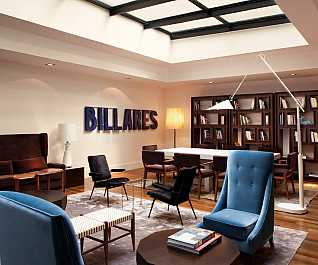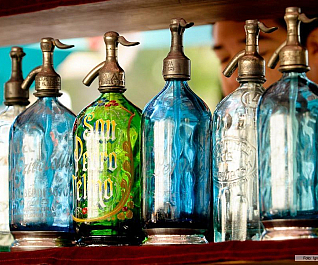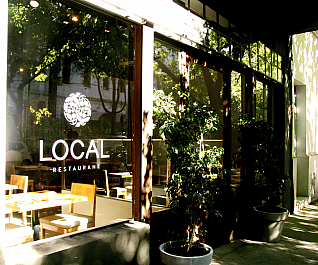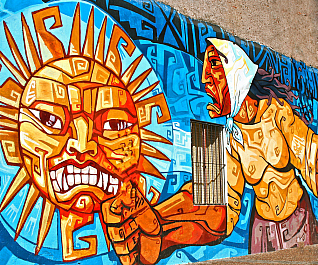Buenos Aires is Argentina’s thriving capital, an autonomous cultural hub with a rich history and outstanding European architecture to boot. Pope Francis hails from the autonomous district that maintains a quality of life ranked 81st internationally with the third highest income per capita in the region. Often referred to as the Paris of the Americas, the temperate port town beside Rio de la Plata attracts trade and tourists year-round as South America’s most visited city. Its unique combination of European and Latin American character draws on a variety of forces throughout the years, including multiple British invasions in the 1800s as well blockades by French and Anglo-French forces later in the same century. From music and dance and theater – Buenos Aires has the highest concentration of dramatic venues in the world – to fine cuisine, bustling nightlife, and exquisite views, to high-fashion and authentic shopping, to remarkable architecture and historic landmarks; Buenos Aires is the ultimate travel destination. Despite its immense popularity as a tourist attraction, here are some ways to avoid common tropes and craft an authentic experience to get your money’s worth.
 |
Where to stayHotel Pulitzer is modern experience located right at the heart of the city. Contemporary décor gives the rooms uncharacteristic personality and charm, made with fine materials from across the globe. Relax after a long day of museum hopping at the hotel’s SKY bar, ranked among the top 10 in Buenos Aires. Enjoy one of the best views of the city with live music while you sip a cocktail and sample some tapas |
 |
Can’t MissIf your Spanish is good enough, haggle over prices with merchants at La Feria de San Telmo, an antique fair in the historic Plaza Dorego that has run every Sunday from 10:00 am to 5:00 pm since its creation by architect Jose Maria Pena in 1970. There you can pick up some souvenirs that honor the city’s rich heritage as you take in the sights and sounds of a time-honored tradition; see musicians and tango artists perform on the streets while you peruse the almost 300 stalls selling local goods. If you’re still jet lagged, never fear. You can get your java fix at Coffee Town, a small hut in the market center that offers the finest espresso made from freshly roasted beans with a compact bar that offers the best people-watching experience in the city. For a taste of Argentina’s signature street food, stop by Parilla de Freddy by the market entrance. What the humble shop lacks in appearance, comprising no more than a grill and dingy countertop, it makes up for with the best “choripán” in Buenos Aires: a handmade chorizo cooked to perfection is butterflied and topped with chimichurri between two pieces of crusty bread in the Argentinian staple that puts American hamburgers to shame. |
 |
NightlifeWhether or not you like to party, the clubbing scene can’t be beat (so to speak). Latin culture is a breeding ground for night owls, and Buenos Aires is no exception; if you truly want to feel like a native, you’ve got to hit the town after dark. Catch dinner after 8:30 PM in Palermo at Local, a hidden gem with a single waitress and short menu of genuine Argentinian fare. If you’re especially hungry, visit Don Julio, a popular steakhouse or “parilla” nearby that attracts both tourists and locals alike. On a Friday night you can head straight from your meal to Crobar for the weekly “Be Techno” party. After the doors open at midnight you can mingle with locals and enjoy world-class house music in a high-energy atmosphere that is characteristic of the city’s nightlife. Do it right and you won’t stop dancing till the sun rises Saturday morning. |
 |
ArtThe Centro Cultural Recoleta provides an exhibition and performance space for all of the arts within a historic building that captures the city’s signature blend of European and Latin American architecture. You could take an entire day to explore the seemingly endless displays, see a concert or show, shop, or even sign up to take one of many classes and workshops like this one about experimenting with art and light. While you’re in the neighborhood of Recoleta, head over to the Museo Nacional de Artes Decorativos (National Museum of Decorative Arts) for a look at the role design has played in Argentina’s development – and vice versa — over the years. The French classical building is another example of Buenos Aires’ architectural charm; considered a historic monument since 1997, the space is home to over 4,000 objects ranging from Roman sculpture to contemporary handmade designs with a strong focus on 16th-19th century European decorative arts. While Buenos Aires offers scores of art museums, some of the most relevant and fascinating work takes place outside the confines of a traditional gallery — literally. The growing graffiti and street art scene attracts more than just vandals and rebellious teenagers; the city is home to several established artists that are contributing to the trend’s popularity and have helped to elevate its status as an accepted form of art. Of course, you can pay to go on a tour of the most notable murals and landmarks, but you can just as easily explore them yourself. Take a stroll through the neighborhood of San Telmo to see a variety of political images and expressive scribbles that change and decay with the living city, or traverse the lesser-known hotspots of Villa Urquiza and Coghlan for a glimpse at the most current experimentations between paint and surface. |
 |
BrunchAs the city rarely sits down to dinner before 9 PM, brunch is unfamiliar territory to the average porteño (the name bestowed on local of the port town). That’s not to say there aren’t some excellent places to get your booze and bread fix; but it’s all the standard fare you would get anywhere else in the world. Here’s how to start your day like a local: In Bocca al Lupo El Obrero |





